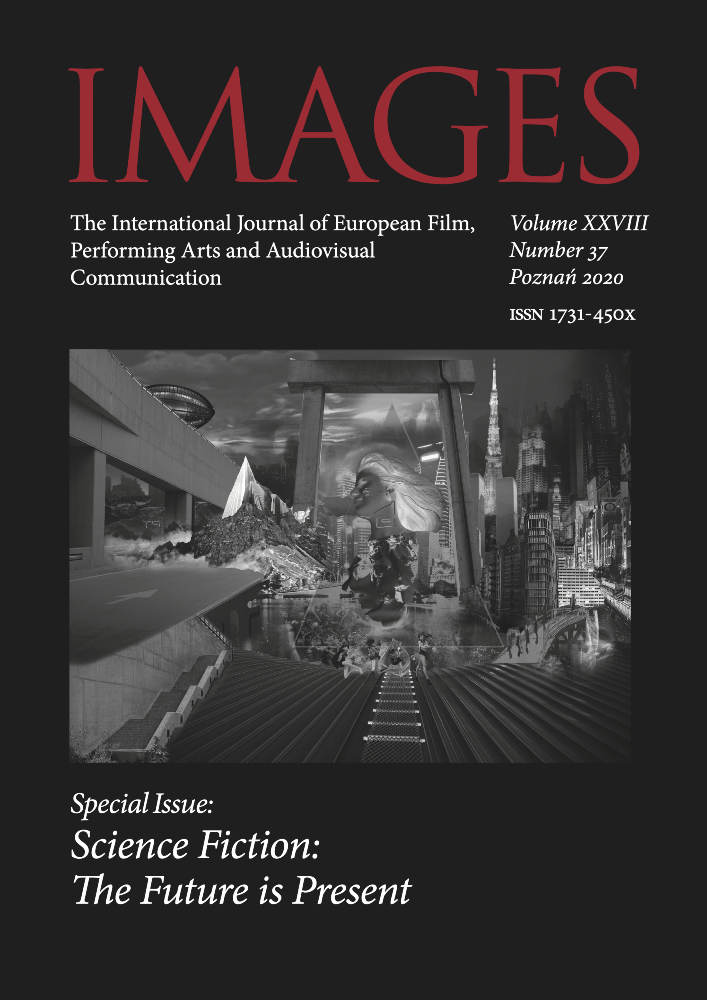Abstrakt
The article reflects on how characters with the features of the mythological Cassandra function in science fiction films. Such references are part of the rich tradition of building fictional depictions of the near or distant future on the foundation of mythical stories. The study aimed to examine the considerable and complex meaning which Cassandra conveys through the ages and to determine its usefulness in constructing pop culture ideas about the current condition of humanity. In contemporary fiction, Cassandra is brought to the fore more often than in ancient sources, and her fullest portrait is drawn in those films that both consider her a figure of the powerlessness of the prophets and take into account her personal drama. In Terminator 2: Judgment Day (1991) by James Cameron, 12 Monkeys (1995) by Terry Gilliam, Minority Report (2002) by Steven Spielberg, and Arrival (2016) by Denis Villeneuve, the figure of Cassandra is examined through her prophetic gift, the alleged madness of the seer and the fearfulness of the prophetism itself.
Bibliografia
Abramowska J., Powtórzenia i wybory. Studia z tematologii i poetyki historycznej, Poznań 1995
Arnheim R., Epic and dramatic film, „Film Culture” 1957, nr 3
Chiang T., Historia twojego życia, tłum. M. Jakuszewski, [w:] Historia twojego życia, Poznań 2016 [e-book]
Colli G., Narodziny filozofii, wstęp i tłum. S. Kasprzysiak, Warszawa, Kraków 1991
Flower M.A., The Seer in Ancient Greece, Berkeley, Los Angeles, London 2008
Goethe J.W., O poezji epickiej i dramatycznej, [w:] Goethe i Schiller o dramacie i teatrze. Wybór pism, tłum. i oprac. O. Dobijanka-Witczakowa, Kraków 1996
Graves R., Mity greckie, tłum. H. Krzeczkowski, Kraków 2009
Kott J., Tragedia grecka i absurd, [w:] J. Kott, Zjadane bogów. Szkice o tragedii greckiej, Kraków 1986
Leder A., Paradoks a filozofia. Niesamoistność człowieka w Grecji archaicznej, „Sztuka i Filozofia” 2003, nr 22–23
Majer A., Narracja czasem. Analiza struktury narracyjnej filmu „Arrival” (2016) Denisa Villeneuve’a, „Images. The International Journal of European Film, Performing Arts and Audiovisual Communication” 2020, vol. XXVIII, nr 37
Piętka R., Profetyzm i historia. Temat Sybilli w literaturze dawnej i dwudziestowiecznej, [w:] Narracja, historia, fikcja. Dawne kultury w historiografii i literaturze, red. Ł. Grüzmacher, Warszawa 2009
Platon, Timaios, Fajdros [w:] Platon, Dialogi, oprac. W. Witwicki, Warszawa 2004
Schapira L.L., The Cassandra Complex: Living with Disbelief. A Modern Perspective on Hysteria, Toronto 1988
Sontag S., Katastrofa w wyobrażeniu, [w:] S. Sontag, Przeciw interpretacji i inne eseje, tłum. A. Skucińska, Kraków 2012
Stempowski J., Esej dla Kassandry, [w:] J. Stempowski, Eseje dla Kassandry, red. P. Kłoczowski, Gdańsk 2005
Sutton T.C., Sutton M., Science fiction as mythology, „Western Folklor” 1969, vol. 28, nr 4
Wesołowska E., Dwie lub trzy Kasandry i co o nich wiem. Kilka uwag, „Prace Filologiczne. Literaturoznawstwo” 2014, nr 4(7)
Licencja
Prawa autorskie (c) 2020 Patrycja Rojek

Utwór dostępny jest na licencji Creative Commons Uznanie autorstwa 4.0 Międzynarodowe.

